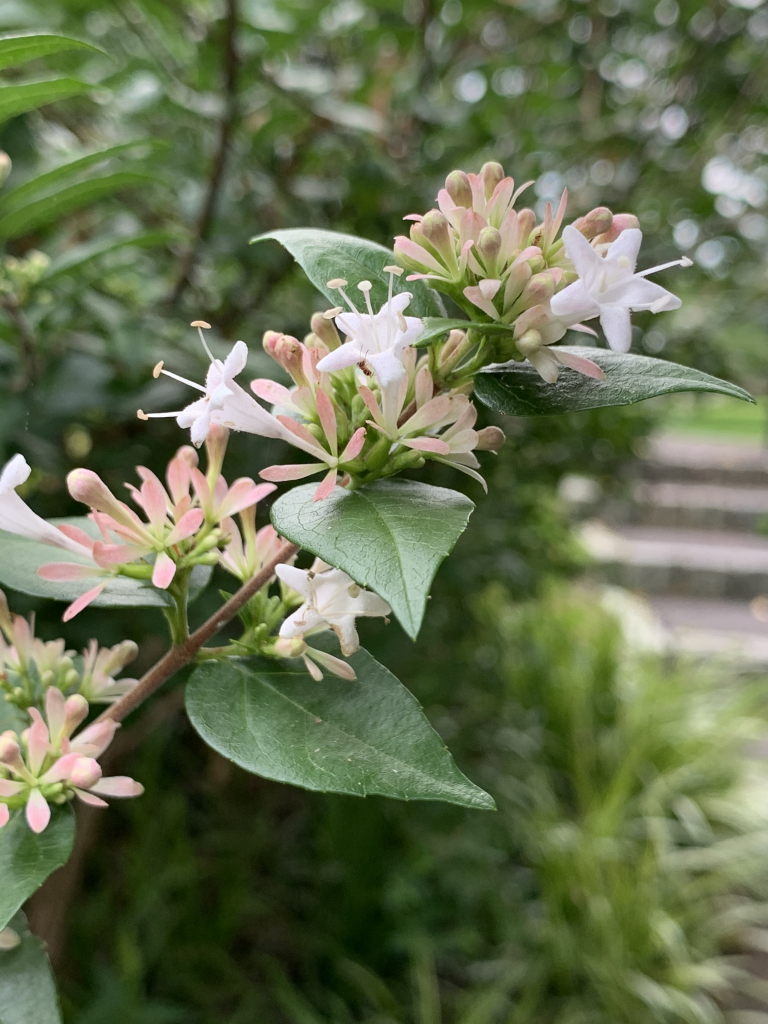
Native to the lower elevations in the mountains of southwest China, this semi-evergreen shrub is a member of the honeysuckle family, Caprifoliaceae, that also includes weigela, pincushion flower and teasel. It grows 5-8′ tall, and is erect or mounded, although may appear weeping at the peak of the bloom time when the flowers weigh down the branch tips. The new growth of the densely branched shrub is covered with soft reddish hairs but becomes silvery-gray to grayish-brown with maturity. The ovate leaves are up to 1.5″ long, have serrated margins, and are dark green above, lighter below. Beginning in summer, 1/2″ long tubular flowers appear in axillary and terminal clusters on the stem tips. The flowers are fragrant and have white petals and green sepals that turn pink with maturity. As the petals decline the persistent pink sepals carry on the showy display into fall. Hummingbirds and butterflies feed on the nectar of the flowers while caterpillars feed on the foliage. Chinese abelia tolerates heat, humidity, and drought once established. It is a good choice for a hedge, border, foundation planting, or specimen, as well as for butterfly, hummingbird, pollinator and fragrance gardens. The genus name, Abelia, honors Dr. Clarke Abel (17801826), English naturalist and physician who was part of a British delegation to the emperor of China in 1816. The specific epithet, chinensis, is a Latinized form of China and refers to the area where the plant is native. Photo Credit Kurt Stuber Wikimedia Commons
Type: Flowering semi-evergreen shrub

Outstanding Feature: Long bloom time; fragrant flowers
Form: Upright to rounded
Growth Rate: Moderate
Bloom: Clusters of tubular white flowers with pink sepals from summer to fall
Size: 5-8′ H x 3-6′ W
Light: Full sun for best flowering and foliage color; tolerates some shade
Soil: Average, consistently moist, well-drained, acidic
Hardiness: Zones 7-9
Care: Prune in early spring if necessary
Pests and Diseases: Generally healthy but susceptible anthracnose, leaf spots, powdery mildew, and fungal root rots
Propagation: Seed, softwood cuttings in early summer or semi-hardwood cuttings in late summer
Outstanding Selections: A. chensis is one of the parents of the very popular hybrid A. x grandiflora, that has many cultivar’
‘China Rose’
Photo Credit: KATHERINE WAGNER-REISS Wikimedia Commons